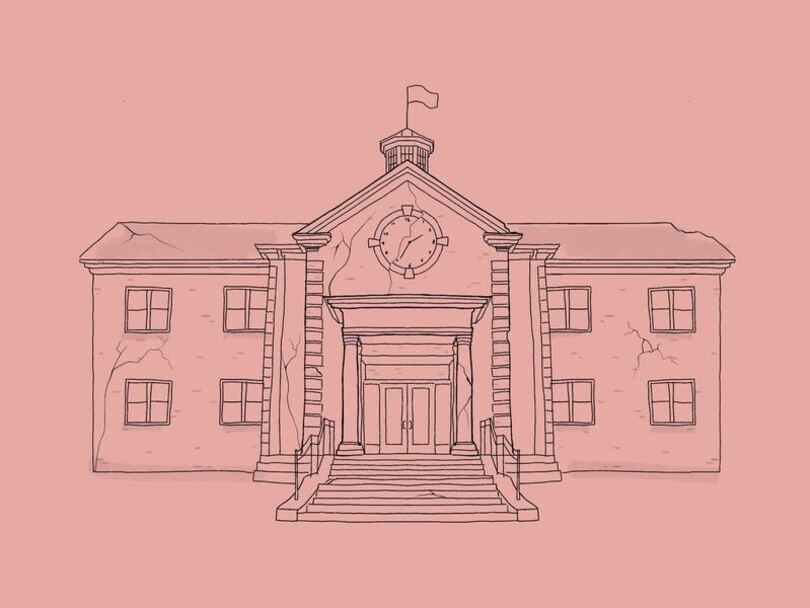Schools in Indigenous communities lack proper funding

Chloe Perline | Asst. Illustration Editor
In order to improve the disparities within Indigenous schools, more state funding must go to helping better their resources.
The relationship between Indigenous communities and the U.S. is fraught with instances of subjugation and violence targeted towards native peoples. The neglect and underdevelopment of infrastructure in Indigenous schools is the latest abuse in this centuries-old legacy.
The Haudenosaunee, a confederacy of Indigenous nations including the Onondaga Nation, has had a treaty with the U.S. since the country’s earliest days of nationhood that includes the provision of healthcare and education to Indigenous communities.
While nearly every school in New York State is funded through the corresponding school district in that community, three schools in Indigenous Nations escape this policy and as a result, have been underfunded for decades. These include the Tuscarora Nation School in the Niagara Wheatfield School District, the St. Regis Mohawk School in the Salmon River School District and the Onondaga Nation School in the Lafayette School District, which is a mere 15-minute drive from Syracuse University.
The superintendents of these districts have described the schools as having “the worst building conditions in NYS.” These schools’ conditions — including crumbling brick walls, poorly functioning heating and cooling systems, inadequate security and fire protection, dangerously degraded concrete and other issues — have raised serious concerns.
In order to tend to these issues, a significant increase in funding will need to be included in New York Legislature’s Executive budget proposal. Currently, Governor Kathy Hochul has allotted $35.7 million for the three aforementioned Indigneous schools, yet this is insufficient for the task at hand. In 2021, the state Executive budget included $37.8 billion for the State Education Department and included actions to generate equitable funding amongst school districts and a comprehensive education and workforce training center in the city of Syracuse.
In 2017, the Every Student Succeeds (ESSA) Act was approved to give New York State the opportunity to leverage significant federal resources in support of its commitment to providing equity, access and opportunity for all students, specifically historically disadvantaged students. The strongest way for the state to build upon this foundation and show its commitment to uplifting disadvantaged communities and students would be to increase the funding for these schools to $60 million. The reason for this estimate is based on a history of native schools having to wait for funding until it reaches emergency status and major building systems are failing. Jeremy Belfield, superintendent of the Lafayette School District, has found data to prove that for every $5 spent to improve other school facilities in the same district, the state only spent $1 on native schools. Providing the full $60 million amount would be a monumental step in correcting the current funding system.
Due to the severity of damages to infrastructure, an additional $6 million ($2 million per school) should be allocated on an annual basis for maintenance and improvements moving forward. Neighbors of the Onondaga Nation, a project of the Syracuse Peace Council, has information regarding tools for organizing and effective measures for civil action on its website, including links to a customizable letter template.
As inhabitants of occupied Indigenous land and temporary residents of the Syracuse area, I encourage fellow SU students committed to equity in education to contact their New York state legislators.
Mariana Rufin is a political science and environment, sustainability and policy major in the Class of 2022, and an intern for the Syracuse Peace Council.





